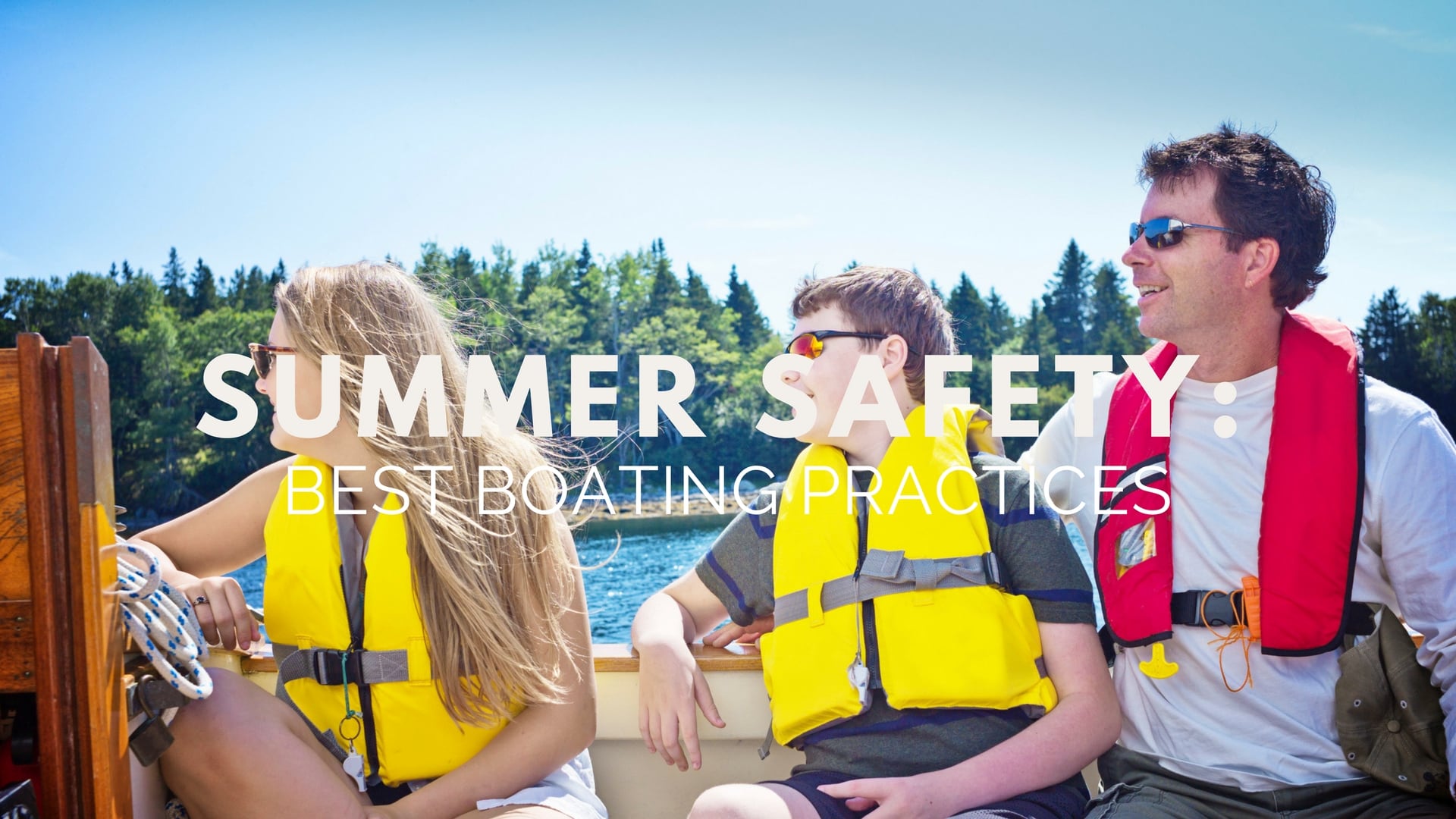Summer Safety: Best Boating Practices

The next entry in our summer safety series still has to do with water, but rather than the safest way to swim in it we're focusing on the best ways to stay afloat when operating a boat/other aquatic equipment.
Here are some considerations (legally required and suggested) to make before getting on any boat:
• Canadian-approved flotation device or lifejacket of appropriate size for each passenger on board
• Buoyant heaving line at least 15 metres in length
• Watertight flashlight OR Canadian approved flares – Type A,B or C
• Sound-signaling device
• Manual propelling device (i.e. paddle) OR an anchor with at least 15 metres of rope, chain or cable
• Bailer OR manual water pump
• Class 5 BC fire extinguisher
Be responsible in all aspects, but especially when it comes to alcohol:
• Wait until you are off the water before consuming alcohol. Remember, if you drink after a day of boating, be sure you have a designated driver for your vehicle.
• Don't allow a person who has consumed alcohol to operate a boat.
• Provide non-alcoholic beverages for boat operators and passengers.
Suggested items to carry onboard:
• Marine First Aid Kit
• Drinking water
• Sun-screen
• Hat
• Sunglasses
• Dry clothing (i.e. long-sleeved shirt)
• Snacks
• Waterproof matches
• Knife
(source: redcross.ca)
The other part of a safe 'on the water' experience is ensuring your boat/aquatic equipment is properly insured. Contact us to learn more about how we can keep you effectively protected. Let us earn your trust.



